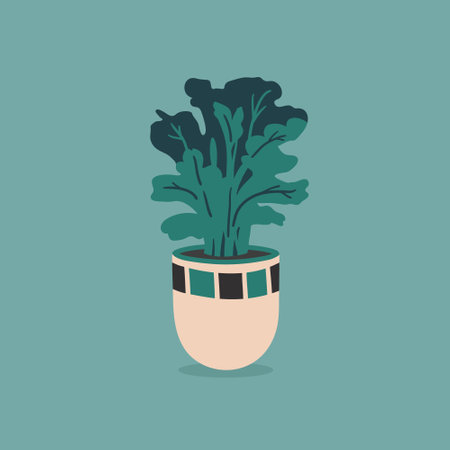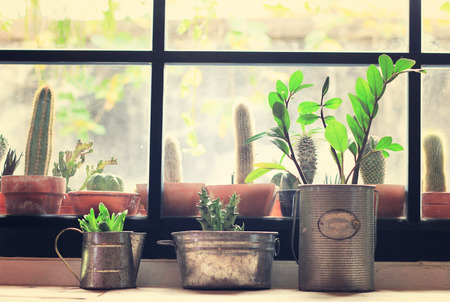1. Why Choose Low-Maintenance Houseplants
If youre new to plant parenting, low-maintenance houseplants are the perfect place to start. These easy-care indoor plants are not only simple to grow but also bring a variety of benefits to your home and well-being—no green thumb required!
Boost Your Mood and Reduce Stress
Studies show that being around plants can help lower stress levels, improve focus, and even boost your mood. Coming home to a touch of greenery can instantly make your space feel more peaceful and inviting.
Improve Indoor Air Quality
Many beginner-friendly plants help purify the air by filtering out common household toxins like formaldehyde and benzene. This means cleaner, fresher air in your home with minimal effort.
Perfect for Busy Lifestyles
Low-maintenance plants thrive on neglect. They don’t need constant watering or special lighting setups, making them ideal for people with hectic schedules or those who travel frequently.
Benefits of Easy-Care Houseplants at a Glance
| Benefit | Description |
|---|---|
| Air Purification | Removes common indoor pollutants for healthier breathing |
| Mood Enhancement | Promotes relaxation and reduces stress |
| Aesthetic Appeal | Adds a fresh and vibrant look to any room |
| Low Maintenance | Requires minimal care, ideal for beginners and busy individuals |
Who Should Consider Easy-Care Plants?
If you’ve ever said “I can’t keep anything alive,” these plants are for you. Whether youre living in an apartment with limited sunlight or working long hours outside the home, theres a low-maintenance plant that can thrive in your environment. Choosing these types of houseplants means less pressure and more enjoyment as you explore the world of indoor gardening.
2. Top 20 Beginner-Friendly Houseplants
If youre just starting your houseplant journey, youre in luck! Some plants are naturally low-maintenance and practically thrive on neglect. Here’s a curated list of the top 20 easiest houseplants for beginners—each one resilient, forgiving, and perfect for bringing greenery into your home without the stress.
| Plant Name | Why Its Great for Beginners | Light Needs | Watering Frequency |
|---|---|---|---|
| Snake Plant (Sansevieria) | Tolerates low light and irregular watering | Low to bright indirect light | Every 2-3 weeks |
| Pothos (Epipremnum aureum) | Fast-growing vine, easy to propagate | Low to bright indirect light | Once a week or when soil is dry |
| ZZ Plant (Zamioculcas zamiifolia) | Thrives on neglect and low light | Low to medium light | Every 2-3 weeks |
| Spider Plant (Chlorophytum comosum) | Puts out baby plants and adapts well indoors | Bright, indirect light | Weekly or when soil feels dry |
| Aloe Vera | Drought-tolerant and has healing properties | Bright, direct sunlight | Every 2-3 weeks; let soil dry completely |
| Peace Lily (Spathiphyllum) | Lush green leaves and occasional white blooms | Medium to low light | Once a week or when droopy |
| Cast Iron Plant (Aspidistra elatior) | Tolerates low light and tough conditions | Low to moderate light | Every 2-3 weeks |
| Philodendron (Heartleaf) | Tolerates low light, easy trailing growth habit | Low to bright indirect light | Weekly or when top inch of soil is dry |
| Dracaena Marginata | Sleek look with minimal care required | Bright, indirect light preferred but tolerates low light | Every 10-14 days or when topsoil dries out |
| Chinese Evergreen (Aglaonema) | Loves humidity and tolerates low light areas well | Low to medium indirect light | Every 1-2 weeks depending on humidity levels |
| Corn Plant (Dracaena fragrans) | Adds height with minimal care needs | Moderate to bright indirect light | Every 1-2 weeks |
| Pepperomia (Various species) | Diverse shapes and textures; compact size is ideal for shelves or desks | Medium to bright indirect light | Once a week |
| Bamboo Palm (Chamaedorea seifrizii) | Adds tropical vibe while purifying air | Bright, indirect light | Once weekly or as needed |
| Kalanchoe | A flowering succulent that’s drought-resistant | Bright sunlight | Let soil dry between waterings |
| Bromeliads | Adds color and thrives in indoor humidity | Bright, indirect sunlight | Mist regularly; water central cup weekly |
| Nerve Plant (Fittonia) | Loves humidity; perfect for terrariums or bathrooms | Low to medium indirect light | Mist frequently; keep soil moist but not soggy |
| Dumb Cane (Dieffenbachia) | Lush foliage; grows quickly in the right conditions | Medium to bright indirect light | Water when the top inch of soil is dry |
| Rubber Plant (Ficus elastica) | Tolerates occasional dryness and adds bold greenery | Bright, filtered light | Every 1-2 weeks |
| Jade Plant (Crassula ovata) | A symbol of good luck; very drought-tolerant | Bright direct or indirect sun | Let soil dry completely before watering |
| Ponytail Palm (Beaucarnea recurvata) | Technically a succulent; stores water in its base | Bright, direct sun preferred | Every 2-3 weeks |
These beginner-friendly houseplants not only look great but also help purify the air and boost mood. Whether you have natural sunlight or mostly shade indoors, theres something here for everyone. Start small with one or two varieties, then grow your collection as your confidence builds!

3. Basic Care Tips Every Plant Parent Should Know
If youre new to houseplants, don’t worry—taking care of indoor greenery doesn’t have to be complicated. Whether youre growing a Snake Plant or a Spider Plant, understanding a few basic principles can set you up for success. Here’s what every beginner plant parent should know about lighting, watering, and soil.
Lighting: Finding the Right Spot
Light is one of the most important factors in keeping your houseplants healthy. Different plants need different levels of light, so it’s helpful to understand the basics:
| Light Level | Description | Best For |
|---|---|---|
| Bright, Indirect Light | Near windows with filtered sunlight or sheer curtains | Pothos, Peace Lily, ZZ Plant |
| Low Light | A few feet away from windows or in shaded corners | Snake Plant, Cast Iron Plant, Chinese Evergreen |
| Direct Sunlight | Windowsills with full sun for several hours a day | Cacti, Succulents, Jade Plant |
If youre unsure about your homes light conditions, try observing how the sun moves through your space during the day or use a light meter app on your phone.
Watering: Don’t Overdo It
The number one mistake beginners make is overwatering. Most houseplants prefer their soil to dry out slightly between waterings. Heres a general guide you can follow:
| Plant Type | Watering Frequency |
|---|---|
| Cacti & Succulents | Every 2–3 weeks (let soil dry completely) |
| Tropical Plants (e.g., Monstera, Peace Lily) | Once a week (keep soil lightly moist) |
| Drought-Tolerant Plants (e.g., ZZ Plant, Snake Plant) | Every 2–4 weeks (let soil dry fully) |
A good rule of thumb: always check the top inch of soil with your finger. If it feels dry, its time to water. Be sure your pots have drainage holes to prevent root rot.
The Right Soil Makes a Difference
The type of soil you use matters just as much as water and light. Choose the right mix based on your plant’s needs:
- Cactus & Succulent Mix: Fast-draining with sand and perlite—perfect for desert plants.
- Tropical Plant Mix: Rich organic material with peat moss and coco coir that retains moisture without becoming soggy.
- All-Purpose Indoor Potting Mix: Great for most common houseplants like pothos and philodendrons.
You can find pre-mixed soils at garden centers or make your own by combining potting mix with materials like perlite or orchid bark to improve drainage.
A Few Extra Beginner-Friendly Tips
- Avoid drastic changes in environment:Your plants need time to adjust when moved from store to home.
- No fertilizer needed right away:If youre using fresh potting soil, wait 1–2 months before adding plant food.
- Cleansing leaves:Dust can block light absorption—wipe leaves gently with a damp cloth once a month.
The key to happy houseplants is observation. Pay attention to how your plant responds over time—itll let you know what it needs!
4. Common Mistakes to Avoid With Houseplants
Even the easiest houseplants can struggle if they’re not cared for properly. As a beginner, it’s easy to make a few common mistakes that can harm your plants. Here’s a simple guide to help you avoid the most frequent pitfalls when caring for your indoor greenery.
Overwatering
This is by far the most common mistake new plant parents make. Most houseplants prefer their soil to dry out slightly between waterings. Constantly wet soil can lead to root rot, a condition that is often fatal for your plant.
How to Avoid It:
- Check the top inch of soil—if it’s dry, its time to water.
- Use pots with drainage holes to let excess water escape.
- Empty saucers under pots so water doesn’t sit at the bottom.
Poor Lighting Choices
Each plant has its own light requirements. Placing a low-light plant in direct sun or a high-light plant in a dark corner can cause issues like leaf burn or stunted growth.
Lighting Needs of Popular Easy Plants:
| Plant Name | Light Preference |
|---|---|
| Pothos | Low to bright, indirect light |
| Snake Plant | Low to medium light |
| Aloe Vera | Bright, direct light |
| Zebra Plant | Bright, indirect light |
| Spathiphyllum (Peace Lily) | Low to medium, indirect light |
Neglect or Inconsistent Care
Your plants need consistent attention—even if they’re low-maintenance. Forgetting to water for weeks or moving them around too often can stress them out and cause leaves to drop or turn yellow.
Tips for Consistent Care:
- Create a weekly plant check-in routine (choose the same day each week).
- Add reminders on your phone or calendar for watering and fertilizing.
- Avoid placing plants near vents, heaters, or drafty windows where temperature fluctuates.
The Wrong Pot or Soil Type
A container without proper drainage or using soil that holds too much water can spell trouble—especially for succulents and other drought-tolerant plants.
Avoid This By:
- Selecting pots with drainage holes at the bottom.
- Using cactus/succulent mix for desert plants and all-purpose potting mix for tropical ones.
- Avoiding decorative pots without drainage unless used as outer covers (cachepots).
Caring Based on Assumptions Instead of Research
No two houseplants are exactly alike. Just because one thrives in your kitchen window doesn’t mean another will too. Always take a moment to learn about each plant’s specific needs.
Your Go-To Checklist Before Buying Any Plant:
- Name of the plant (so you can look up care needs)
- Your home’s lighting conditions where you plan to place it
- The level of care youre realistically able to provide (daily vs weekly attention)
Avoiding these common mistakes will set you up for success with any of the top 20 easiest houseplants. With just a little attention and understanding, even first-time plant owners can enjoy lush, thriving greenery indoors!
5. How to Expand Your Indoor Jungle with Confidence
Once youve mastered the basics of caring for easy houseplants, its natural to want more greenery in your space. Growing your indoor plant collection doesnt have to be expensive or complicated. With a few simple techniques, you can confidently grow your own indoor jungle while keeping things sustainable and budget-friendly.
Propagate Your Plants
One of the easiest and most satisfying ways to grow your collection is through propagation. Many beginner-friendly plants, like pothos and spider plants, are perfect candidates for this.
Common Propagation Methods
| Method | Description | Best For |
|---|---|---|
| Water Propagation | Cut a healthy stem, place it in water until roots form, then transfer to soil. | Pothos, Philodendron, Tradescantia |
| Division | Gently separate the root ball into smaller sections and replant each one. | Snake Plant, Peace Lily, ZZ Plant |
| Leaf Cuttings | Place a leaf or part of a leaf in soil or water to grow a new plant. | African Violet, Peperomia |
Repotting for Growth
As your plants mature, they may outgrow their containers. Repotting not only gives them room to grow but also keeps them healthy by refreshing the soil and improving drainage.
Signs Your Plant Needs Repotting
- Roots are growing out of the drainage holes.
- The plant dries out quickly after watering.
- You notice stunted growth or yellowing leaves.
- The current pot is cracked or too small.
Steps for Easy Repotting:
- Select a pot 1-2 inches larger than the current one with good drainage.
- Add fresh potting mix at the bottom of the new pot.
- Gently remove the plant from its old pot and loosen the roots.
- Place it in the center of the new pot and fill around with soil.
- Water thoroughly and place it back in its original spot.
Sustainable Ways to Grow Your Collection Over Time
You don’t need to buy new plants every week to expand your jungle. Try these eco-friendly ideas:
- Plant Swaps: Trade cuttings or baby plants with friends or local plant groups.
- Reuse Containers: Get creative with recycled jars, mugs, or thrifted pots.
- Compost Old Soil: Refresh used soil by mixing it with compost before reuse.
- Seasonal Care: Rotate care routines based on seasons to keep plants thriving year-round.
The key is to enjoy the process and grow your indoor garden at your own pace. With time and care, your cozy corner of green can transform into a lush indoor oasis full of life and color.


